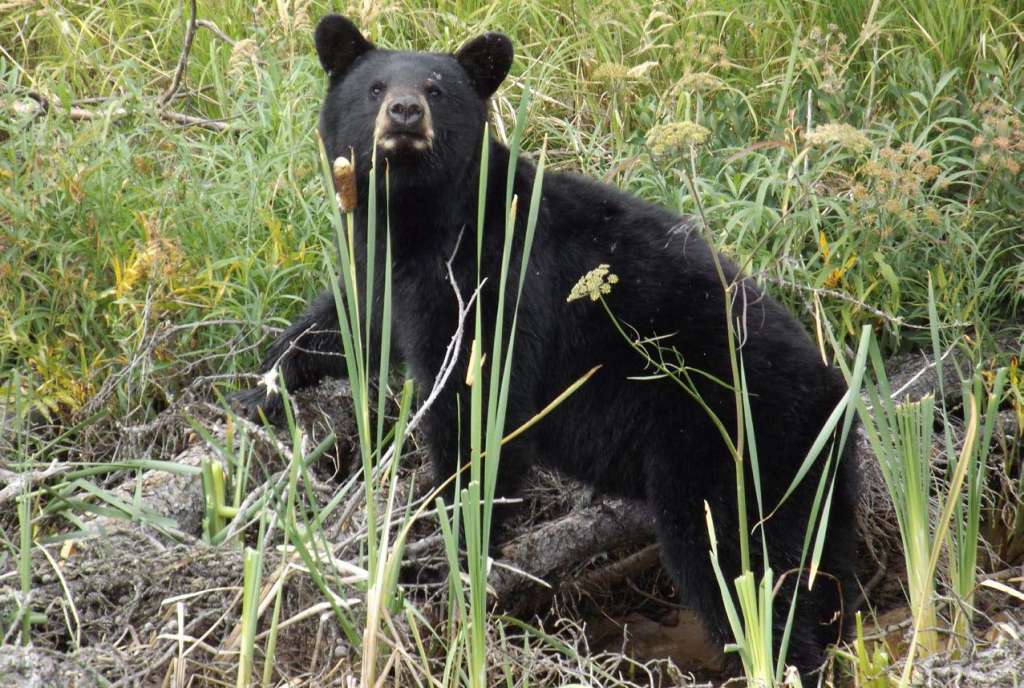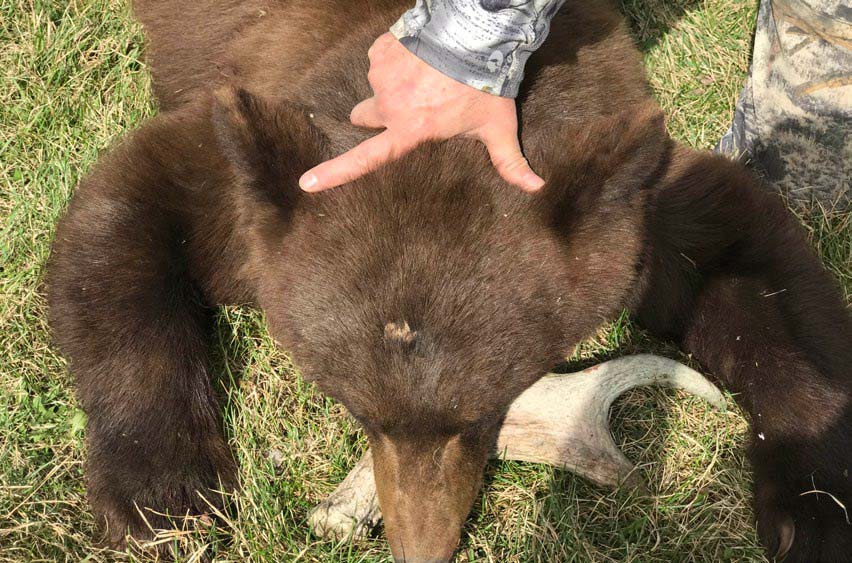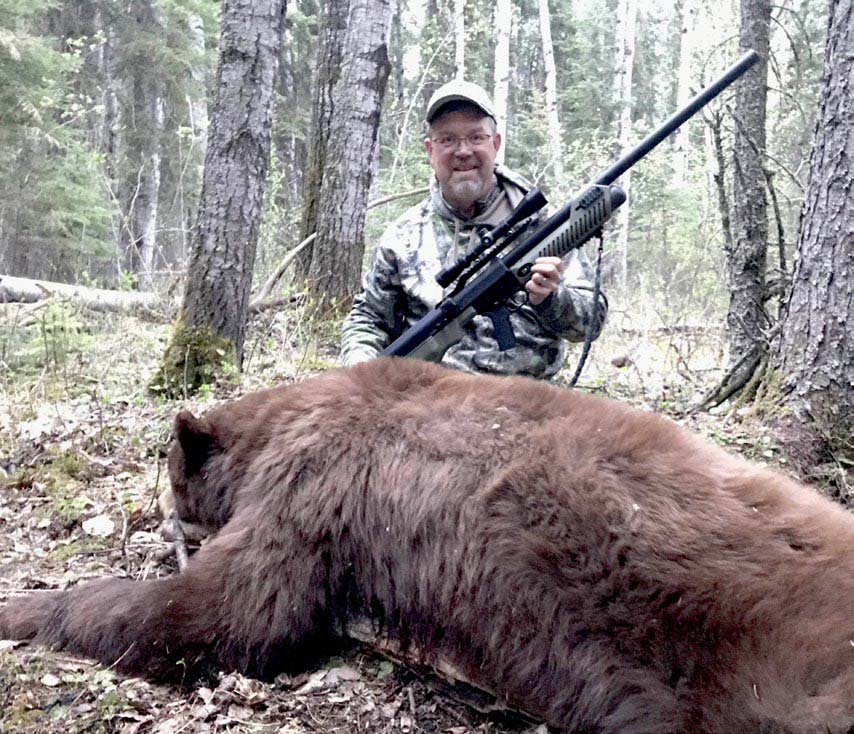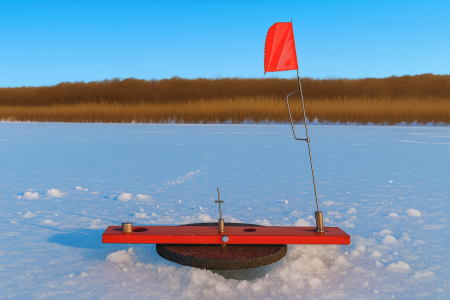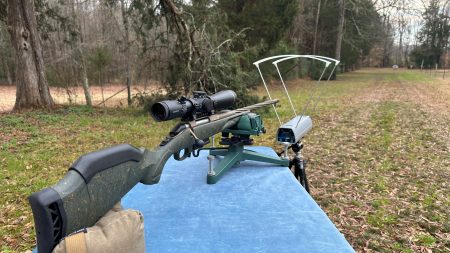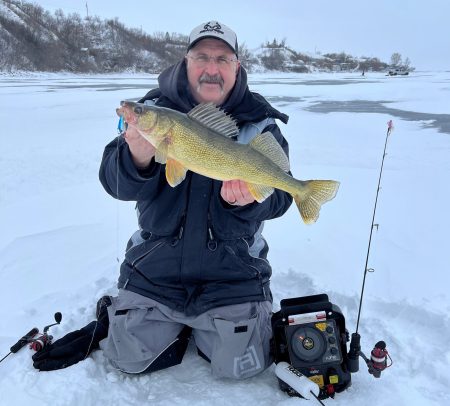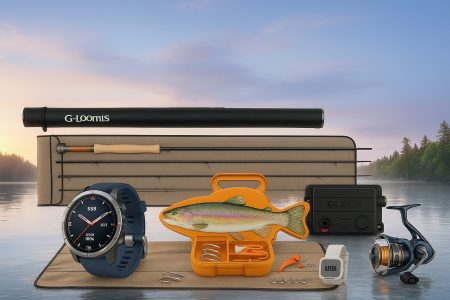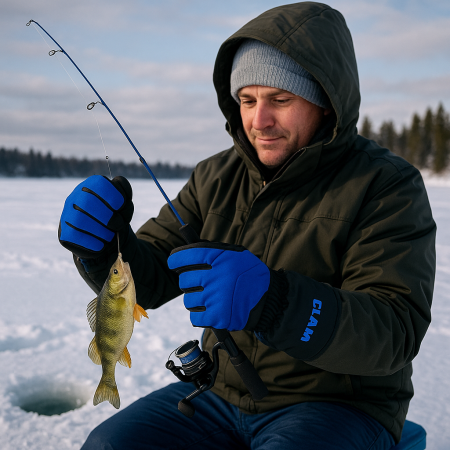When friends from the states called to find out about bear hunting in Alberta, the questions were not about the animal itself, rather the types of rifles you can legally use to harvest them. Umarex is introducing the “Hammer,” a .50-calibre, highpowered air rifle and they wanted to put it to the test on an Alberta bruin.
The first thing we did was to phone Fish & Wildlife to confirm that the rifle would be legal to use in our province. Firearms are restricted in Alberta by the size of calibre, and a bullet must be larger than .23 calibre to be used for big game hunting. I had little doubt the Hammer would work and for a good reason—with 3,000 psi per shot, a 400-grain soft lead bullet hits hard and releases incredible energy.
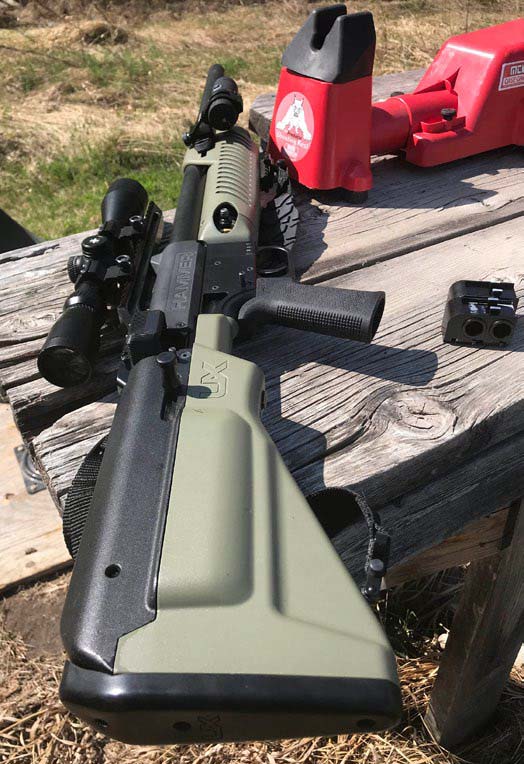
Modern air rifles are even more effective, and arrangements were made to hunt with an Alberta outfitter, where I would join some of the Umarex crew for the hunt. Getting to camp, I lined up my target and placed the first two bullets out of the Hammer I’d be using in the same hole. I was ready and confident in my newest hunting equipment.
I wasn’t in the stand long when a medium-sized black boar came to visit and entertained me with his antics. He wore a bright orange ear tag, indicating he was a problem bear in someone’s backyard and was moved to the remote stretches of forest. This bad-boy bruin seemed comfortable and accepted of his surroundings and settled in for several hours. A small sow showed up and stole the show, with the two bears acting rather randy and playful. The last I saw of them they were chasing each other with playful jousting.
Our scratching buddy visited most of the evening before making a hasty retreat for dense cover as the sun started to set. Soon after, a nice black boar came in and stood on his hind legs to get an unobstructed view of the area. The bear was extremely cautious, and I sat perfectly still hoping it would come in and settle down. The bear stood slightly taller than the 55-gallon drum at the bait, letting me know it was a definite shooter. The bear walked to the barrel, smelled the air, and turned to head back from where he came. I leveled my crosshair on the vitals but before I could apply pressure to the trigger the bear bolted with a crashing retreat into cover. Bears have keen senses, and the boar just knew we were there. I hadn’t done anything wrong and hoped it would wander back in before the end of legal light, but it didn’t.
The next day I opted to change baits for the third night and sat in a large, white spruce with a bird’s eye view of the action, and it didn’t take long before a nice black bear came in. The boar was slightly smaller than the barrel, and we watched it feed for over an hour before wandering off. A series of down poplar trees acted like a tightrope, and the bear walked up and down the tangle of logs without missing a step. Just before dark, several other bears showed up, and there was lots of chasing and crashing in the trees, but I didn’t see the bear I was hoping to find.
I opted to sit the next morning and was up by 4:45 a.m. to beat the heat of the rising sun. The same black bear that had been there the night before came in, joined by a smaller black with a bright gold muzzle. I sat for over six hours before getting picked up.
Settling back into the stand that afternoon, I checked my harness to ensure I was safe after indulging in another big meal. The same black boar seen on the previous two sits was back to entertain me around 7:00 p.m. He moseyed in as though he owned the place and quickly went to work filling his stomach. The bear had a beautiful hide with thick fur that glistened in the sun with a bluish tinge in the right light. After an hour and a half, the bear got up, walked down his sequence of logs, and disappeared into the forest. I sat in silence, wishing I still had entertainment and an early-warning system for bigger bears.
I grew complacent in my visual search of the forest and well-worn game trails when something caught my attention. Was it brown?
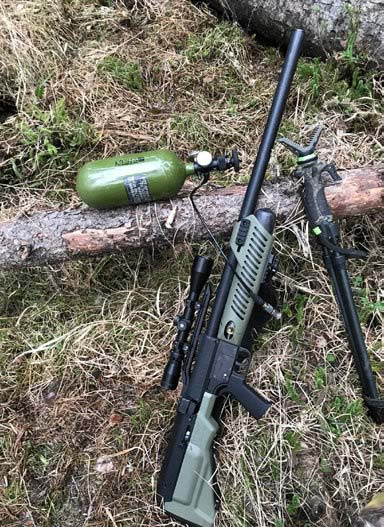
I hoped to shoot the bear but was going to wait for the perfect broadside shot. Of course, the bear plopped down on the ground facing me and fed for 15 minutes while I checked it through my scope. It teased me but never offered a clear view of its side profile.
The bear finally stood up and wandered behind the bait, and when it returned, it offered a full view of its right side. Steady on my shooting sticks I wasted little time clicking off the safety and tightening up on the trigger. At the sound of the shot, the bear cartwheeled twice, found his footing, and charged about 12 metres into the trees. I had already recocked my rifle and was following it with my scope for a follow-up shot when it fell to the ground. I had taken my first bear with an air rifle and was shaking with excitement.
Not only was the Hammer effective, but it was quiet and easy to shoot. The rifle is by no means silent, but the charge of air is not as loud as burning gun powder. The large bullet made short work of tracking, which is always an important consideration when hunting bears. Being able to watch the animal tip over is always a relief, knowing no tracking is required.
The bear was a unique color of brown and grew as I got closer to it on the ground. Stretching close to six and a half feet from nose to tail, I knew it was a great bear. My bear had fresh wounds from fighting and showed all the signs of being a mature boar. My first air rifle black bear hunt was an enormous success, and I can’t wait for a repeat performance.
UMAREX HAMMER
Umarex USA launched the Hammer, an American-made .50 caliber air rifle, this past year. They are assembled in Fort Smith, Arkansas, with several components built to by the German parent company. The Hammer is powered by 4,500 pounds per square inch of compressed air on-board the carbon fiber cylinder to a capacity of 24 cubic inches. The Hammer’s Lightspeed valve, coupled with a regulator, instantly pulses a measure of air compressed to 3,000 psi, behind the projectile. The system propelled my .50 caliber 400-grain lead slug at a muzzle velocity of 800 feet per second and a 180-grain slug tested on the range at 1,200 feet per second. For more information go to www.umarexusa.com
By Brad Fenson
Per our affiliate disclosure, we may earn revenue from the products available on this page. To learn more about how we test gear, click here.






